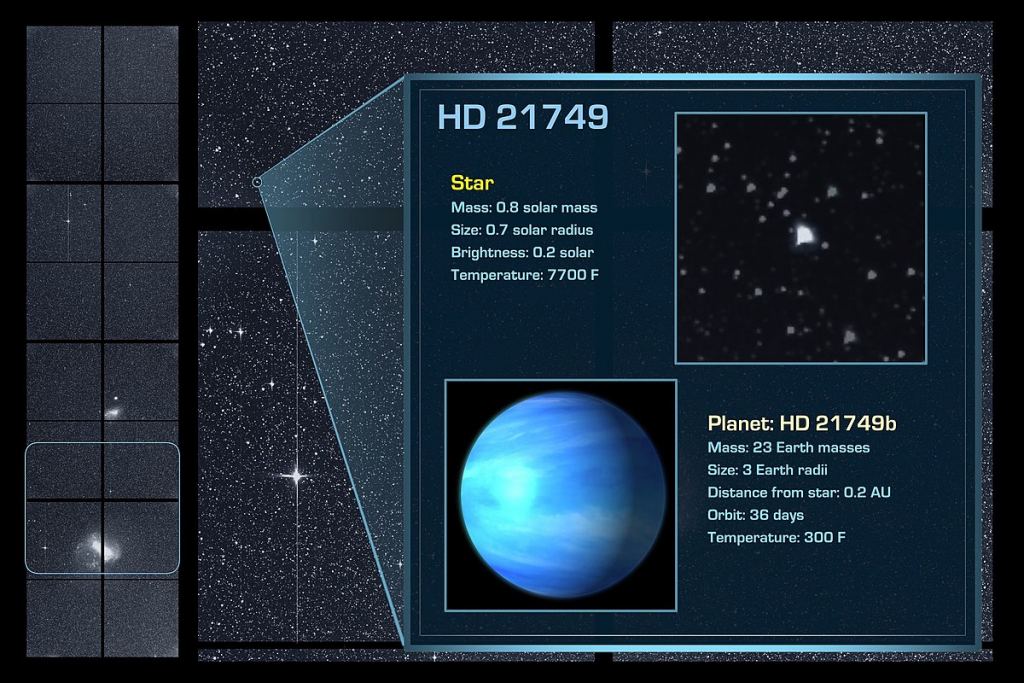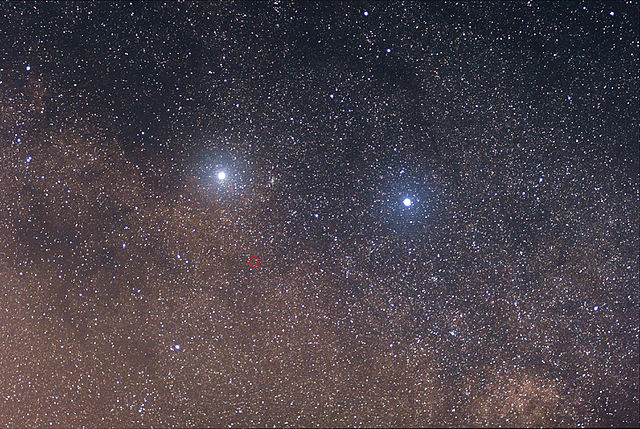After only three months of operation, NASA’s TESS (Transiting Exoplanet Survey Satellite) spacecraft is delivering on its mission to find more exoplanets. A new paper presents the latest finding: a sub-Neptune planet with a 36-day orbit around its star. This is the third confirmed exoplanet that TESS has found.
The planet orbits a K-dwarf star about 52 light years away, in the constellation Reticulum. In astronomical terms, this makes the planet pretty close to us, and a great candidate for follow-up observations. Even better, it may have a sibling planet about the same size as Earth.
The planet itself is called HD 21749b, and it’s about three times the size of Earth, and about 23 times the mass of Earth. This makes it a sub-Neptune, a planet somewhere between Earth and Neptune in size and mass. It’s star is a K-type star, or K-dwarf star, named HD 21749. The star is about 80% the mass of the Sun.
“This planet has a greater density than Neptune, but it isn’t rocky.” – Diana Dragomir, MIT Kavli Institute for Astrophysics and Space Research.
“This planet has a greater density than Neptune, but it isn’t rocky. It could be a water planet or have some other type of substantial atmosphere,” explained Diana Dragomir, a Hubble Fellow at MKI and lead author of the paper describing the find.
With a 36 day orbit, the new planet is close to its star, and its surface temperatures are expected to be around 150 degrees Celsius (300 degrees Fahrenheit). HD 21749b is the longest-period transiting planet within 100 light-years of the solar system. It also has the coolest surface temperature of a transiting exoplanet around a star brighter than 10th magnitude.

The new planet is one of the three densest exoplanets with a mass above 15 Earth masses. The other two were found by Kepler, and are called Kepler 131b and K2 66b. Those two have densities that suggest rocky compositions, but they’re less massive than the new planet. But the density of the new planet, HD 21749b, suggest it has a substantial atmosphere.
Scientists will be eager to do follow-up study on the new planet, especially of its atmosphere. The James Webb Space Telescope (JWST) would be used for that, once it’s in business. But according to the authors of the paper, “HD 21749b is not an ideal target for atmospheric characterization with the JWST,” because of the time it takes. But given the scarcity of this type of exoplanet, the necessary observing time with the JWST may be warranted.
The discovery of more planets is always exciting. But in this case, the star it’s orbiting adds to the excitement. K-type stars like HD 21749 are very stable and long-lived stars. Their small masses give the stars extremely long life spans. They can stay on the main-sequence for between 15-70 billion years, giving life a long time to start and evolve, if conditions are right on any of the star’s planets. Our own Sun will only be stable for about 10 billion years, and half that time has already passed.

K-type stars also emit less ultraviolet radiation than stars like our Sun. UV can damage DNA and hamper the development of life. They’re also more plentiful than stars like our Sun, so they’re key to the search for life.
The system has another planet candidate, too. This one is Earth-sized, and if confirmed by follow-up observations, it would be the smallest planet found by TESS so far. The planet, called TOI 186.02 for now, is about 2.5 times the mass of Earth. Not much else is known about it yet.
TESS is on a two-year mission to find exoplanets. It’s the successor to the successful Kepler mission. It will survey over 85% of the sky, and will look at 200,000 dwarf-type stars to search for exoplanets. When TESS finds a candidate exoplanet, follow-up observations by other telescopes will confirm its findings.
Sources:
- NASA Press Release: NASA’s TESS Rounds Up its First Planets, Snares Far-flung Supernovae
- Research Paper: THE LONGEST PERIOD TESS PLANET YET: A SUB-NEPTUNE TRANSITING A BRIGHT, NEARBY K DWARF STAR
- NASA TESS Mission Objectives
- MIT Kavli Institute
- Wikipedia Entry: K-type Main Sequence Star


While I understand that UV can damage DNA and hamper the development of life, wouldn’t it also be a possible cause of the variety of species and the adaptation of life forms to various climates? Without altered DNA, would evolution be possible?